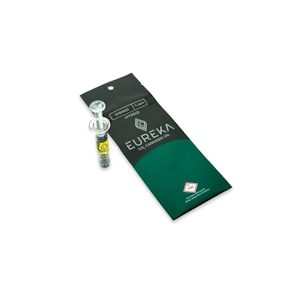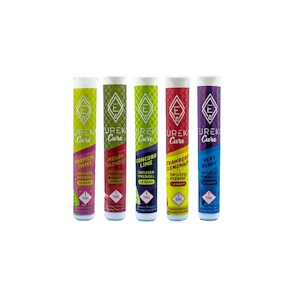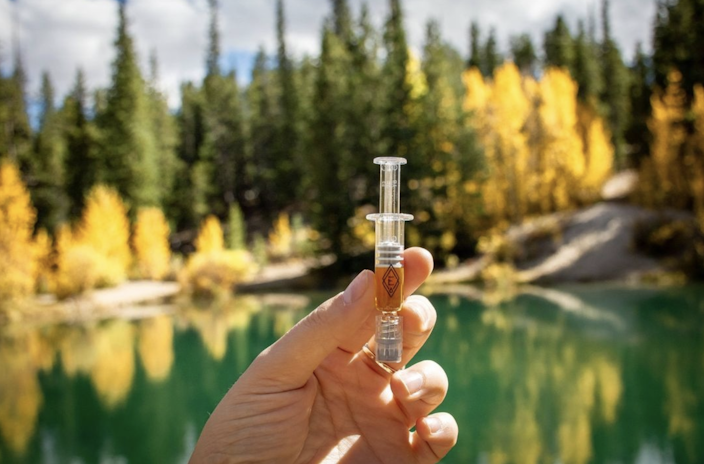
Photo courtesy of Eureka Vapor
How Is Cannabis Oil Lab Tested?
Keep this handy before buying your next oil. Created with Eureka Vapor.
You might have heard already that the cannabis market is still very unregulated. That means that several products you could find out there don’t necessarily follow quality rules. Consequently, you can’t be sure that what you are buying has what it says it has.
Thus, you might be using oil with other substances that can be harmful to your health but are not labeled. That is why it is important to buy products from reputable brands that have their products tested by third-party labs.
Still, a responsible user would ask what to do a lab test so that you could identify high-quality products. The quality of the oil and what lab test them is associated with the making of cannabis oil and its purpose. So, keep reading to learn about this and expand your knowledge of cannabis oils.
Knowing more about what you are using guides you to know what you want and how to get it. Thus, learning improves your experience using oil.
How Is Cannabis Oil Made?
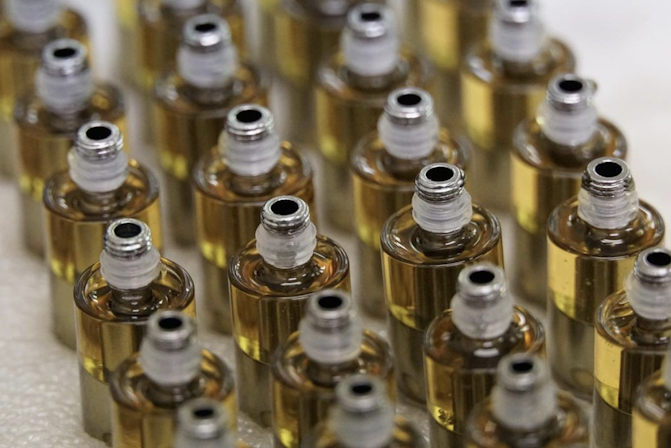
Photo courtesy of Eureka Vapor
First of all, manufacturers extract terpenes and cannabinoids from the plant material. Thus, they must choose an extraction method that can be solvent-based or solventless. Solvents break down into carcinogenic compounds when heated at high temperatures.
Using vegetable glycerin as a solvent avoids carcinogenic compounds. But, using it lowers the oil’s potency and could harm terpenes. In consequence, it reduces the quality of vaping.
Using this method, pour your ground-up buds and enough glycerin to saturate them into a heat-safe jar. Then, put this jar in an oil bath heating at 220°F for 45 minutes to decarboxylate the weed. After that, let it cool and press the mix of glycerin and weed to extract the oil, putting it in another heat-safe recipient.
After the first extraction, you could add more glycerin to take some more oil, but it won’t be as reach as the first extract. Then, the jar extracted oil goes to the oil bath again for 30 minutes to complete the decarb. The next step is to take that extract with a syringe and put it in a vape cartridge.
The solventless method extracts the popular rosin material. This method doesn’t involve handling harmful substances; thus, it is the safest.
And, it preserves the terpenes and cannabinoids of the flower better than other methods. In consequence, you get the purest and most delightful oil. This is what brands like Eureka do to offer pure cannabis oil.
To make rosin oil, first, use heat and pressure on fresh nugs to extract. Manufacturers use specialized machines to do this without solvents. The oil sticks to a parchment paper, and from the paper to a vial.
It is common to add a terpenes solution to enhance the oil. Then, a flash heating of a few seconds activates cannabinoids, and they mix the oil to blend the terpenes solution. And that’s it, use a syringe to put it in a cartridge.
How Is Cannabis Oil Lab Tested?
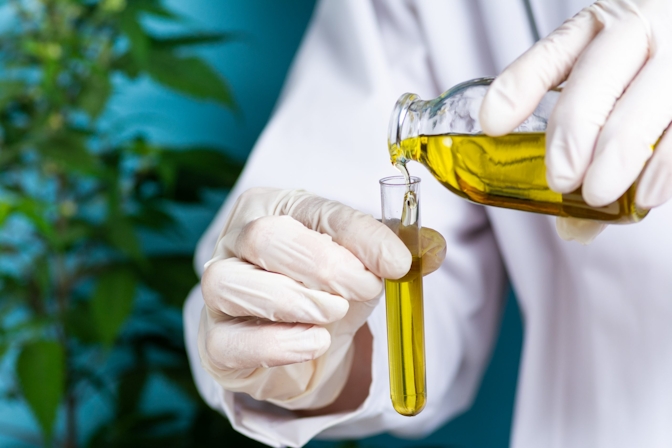
Photo by creativefamily / Adobe Stock Photo
There are three well-developed methods to test cannabis oil. Both have kind of hard names to spell but are easy to understand.
High Performance Liquid Chromatography (HPLC)
This method separates the compounds of a mixture so that testers can identify and analyze them. HPLC is especially useful to know the number of cannabinoids in the oil.
Thus, this is how they test the concentration of different cannabinoids like THC and CBD. And, it is helpful to identify the concentration of minor cannabinoids.
Gas Chromatography (GC)
The GC method relies on the boiling point of different molecules in the oil to separate them. And, it is useful to separate proteins, nucleic acids, and small molecules.
Liquid Chromatography (LC)
The LC method works fine for the same kind of substances and molecules as the GC method. But, this one uses the interaction of the compounds with the chromatography medium to separate them.
What Is Tested?
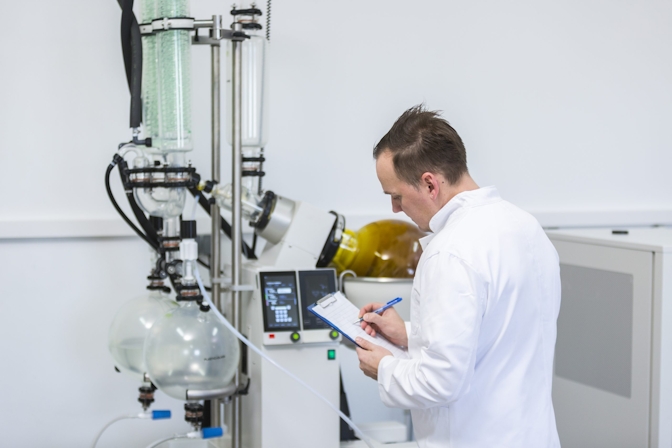
Photo by MexChriss / Adobe Stock Photo
That was the most technical part. But, it doesn’t give us enough information about what they do when testing cannabis oil.
It is better to understand if we learn what is it that they test when they analyze proteins, nucleic acids, and so on.
Potency
We can talk about the potency as the intensity of the effects of the oil in the organism. You could expect a greater potency if the percentage of cannabinoids is big. But, it also depends on their interaction with other compounds.
The physical effects of CBD enhance the experience of the psychoactive THC. And, terpenes enrich the complexity of the effect of cannabinoids. This leads us to the next characteristics.
Cannabinoid Profiles
The cannabinoids profile shows the different cannabinoids in the oil and their concentration. There are strains rich in more than one cannabinoid.
And, manufacturers add distillate of different cannabinoids to improve the quality of the product. That way the effects you get are more complex and can adjust to different needs.
Terpenes
Terpenes determine the aroma and flavor of the oil. But, they also have therapeutical effects and some of them are present in traditional medicine around the world.
Terpenes interact with cannabinoids causing the entourage effect. This effect empowers the incidence of the oil in your organism, expanding the potential of cannabis.
Safety
Cannabis oil is safe to use when it doesn’t have harmful substances to your health. As we mentioned before, solvents could cause cancer, but it doesn’t mean that all solvent-based oils will.
Good manufacturers can remove the solvent they used in their process from the oil. In consequence, you can have safe and high-quality oils created with solvents. What you need to check is that its concentration in the final product is so low it is not harmful.
Consistency
In general, liquid cannabis must have a thick consistency. It must be sticky and viscous like oil or paste. If they are too liquid, then it is possible that it has too much solvent. Thus, it is not a high-quality product. And, as it could release carcinogenic compounds, it could be harmful to your health.
The Importance Of Buying Lab Tested Cannabis Oil

Photo courtesy of Eureka Vapor
The most important thing to keep in mind is the impact of the product you are using on your health.
Unregulated products won’t show if they have high concentrations of solvents in their labels. But, lab-tested products come from manufacturing practices that will remove those substances.
Another reason is that you can be sure that you buy what you expect. There is the risk of buying products without the concentrations of compounds they say they have.
But, lab-tested products will always have what they say on their labels. This is a way of saving your money and your time. For instance, these are the benefits you get from Eureka cannabis oil.
And last but not least, buying lab-tested products is a way to support the industry’s good reputation. And, it is also a way of encouraging brands and vendors to be responsible with their customers.
Cannabis is about helping people and improving their lives. Thus, it is necessary that it is safe to use for those who give it a chance.
Herb Recommended Products:
READ MORE



